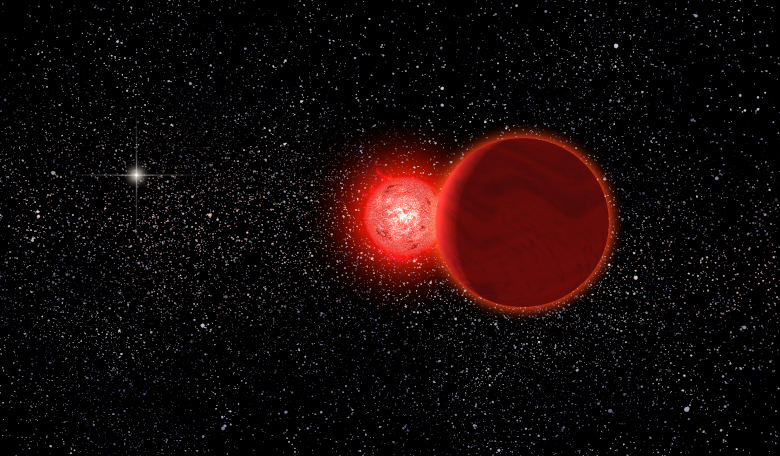Although scientists have a good understanding of how our Solar System formed, some mysteries still remain. Why for example is Uranus tilted sideways, does the Oort Cloud really exist and why does a lot of the dust found in meteorites seem to have been melted rapidly?Now, in a bizarre twist, it seems that astronomers might have an explanation for the last question and the answer has come from an unexpected source - the unusual brightening of a star in the constellation Orion.
In 1936, over the course of the year, a previously undistinguished faint star in Orion known as FU Ori, became a whopping 250 times brighter than it usually noted to be and has remained bright ever since.
But why? It turns out FU Ori was not alone in its sudden increase in luminosity and over the years, a number of objects have now been observed to act the same way.
These type of stars are classed as FU Orionis objects or FUors, and astronomers think it is due to episodic mass accretion or thermal instabilities in a gaseous disk surrounding the star that are causing these changes.
However the mechanisms behind these theories are not fully clear. "Many explanations have been proposed, but none completely explain the phenomenon," said Elisabeth Borchert, a PhD candidate from the Monash School of Physics and Astronomy and lead author behind a new study examining FU Orionis outburst events.
Instead, Borchert and team, have another answer; stellar flybys of a close companion that disrupts a star’s circumprimary disk. A circumprimary disk is one which orbits the primary (i.e. more massive) star of a binary system.
To reach this conclusion, the research team performed 3D computer simulations of interacting stars and examined whether a star crashing into the planet-forming disk around another star could explain the sudden change in brightness.
"We show that another star crashing into the surrounding disk of gas and dust results in 250 times change in brightness in one to two years," said co-author Associate Professor Christophe Pinte, also from the Monash School of Physics and Astronomy.
"The surprise of the study was that the small star is the one that becomes bright, which is nice as in FU Ori the low-mass star is the bright one of the pair," Borchert said.
During the simulations, the team also saw that when the second star crashed into the disk, it heated up the material to around 1580 K (1306.85 °C).
This is not enough to cause thermal instabilities in the disk say the team, but it is hot enough to melt dust.
“Interestingly, such rapid heating of the disk with dust melting could possibly explain the existence of chondrules in our solar system, where dynamical evidence for a past flyby exists,” the team write in their research paper. Chondrules are round mineral grains with textures that indicate they crystallised from being melted. They are found embedded in large numbers in some stony meteorites called chondrites. Chondrules found to date are over four billion years old – older than the Earth and other planets in our Solar System.
The team’s research, “On the rise times in FU Orionis events,” will be published in the Monthly Notices of the Royal Astronomical Society (MNRAS).











